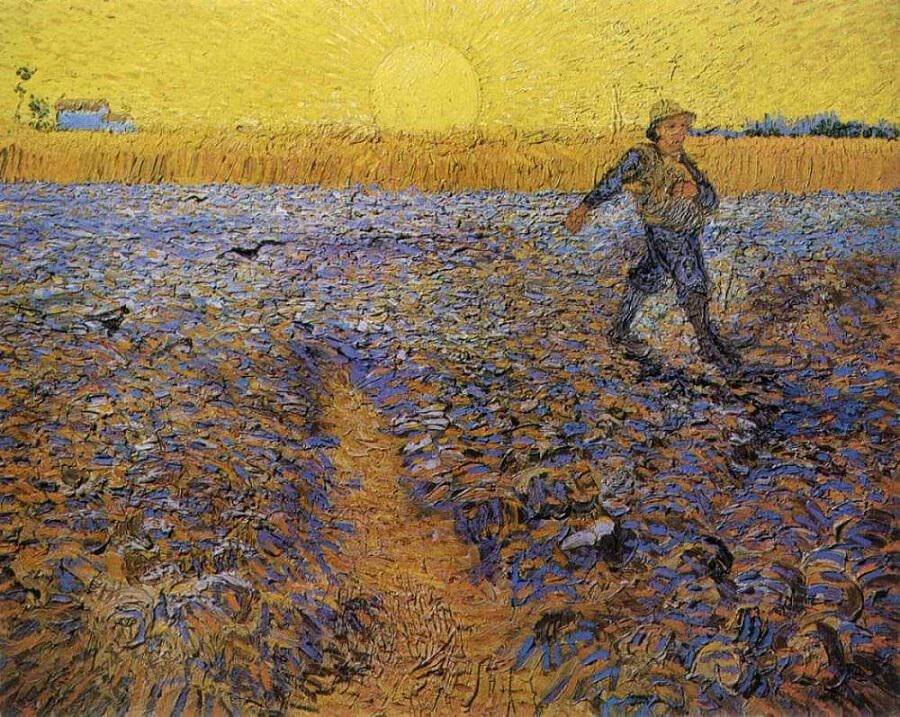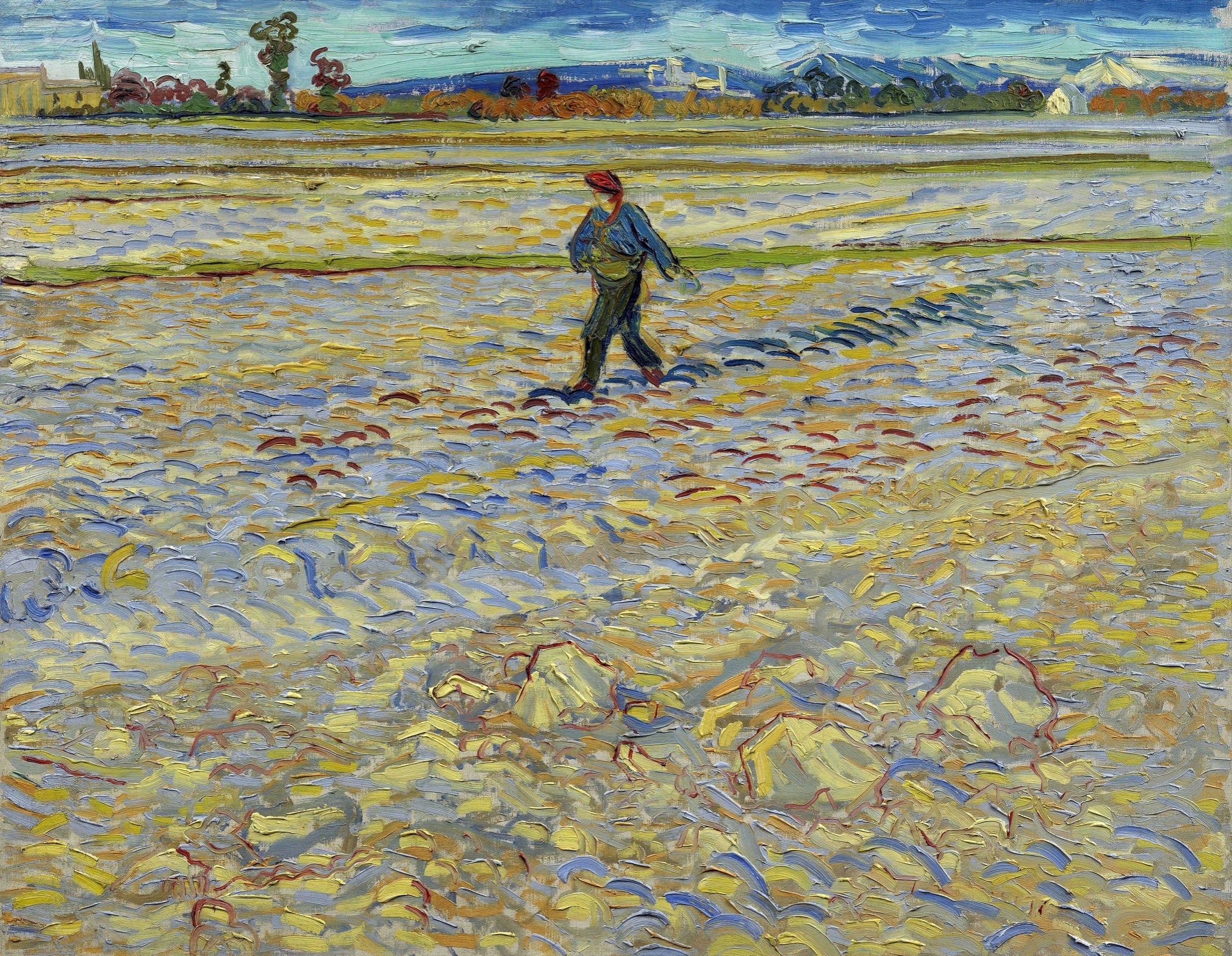
Palm Sunday is tomorrow, and Jesus’s words have been on my mind: ‘Unless a seed falls to the ground and dies it remains alone, but if it dies, it bears much fruit.’ (John 12:24) With the joy and promise of spring upon us it feels disconcerting to think of death, especially that of Jesus.
As I notice the juxtaposition of brighter days with the foretelling of Jesus’s crucifixion, I think of the natural processes that are necessary to bring forth food for ourselves and all living creatures. Seeds planted break open to transform into seedlings, seedlings become plants that produce flowers, flowers transform into fruit, fruit falls to the earth and decomposes to allow more seeds to find their way into the ground and start the process anew. I feel my faith encouraged by how Jesus’s story relates to the patterns of life. Jesus describes himself as a seed and describes words of faith as seeds planted by a sower. (Matthew 3:1-5, Mark4:1-20, Luke 8:4-15)

The sower was a major theme in the art of Van Gogh, he made over 30 paintings and drawings on the subject throughout his life. The Van Gogh museum says: ‘The sower symbolised the eternal cycle of existence. Sowing brings forth new life.’ The two paintings I share here were made in 1888 in Arles, an area in France that was filled with light and colour. When I looked at these images recently, I thought about how seeds find their way from darkness to light.
Wanting to understand more about the life cycle of seeds, I was surprised to learn that it was not the sun that seedlings grew toward first, it was the earth. Seedlings orient themselves by growing toward gravity, by growing at first deeper into the ground. It is then after establishing a root hold, that they are able to rise to the surface of the soil and into the light and nourishment of the sun.
The parable of the sower and the seeds is also known as the parable of the soils. Shallow soils are inadequate as they do not allow for seeds to be grounded. For me, this insight helps me understand why faith, hope and love need to be integrated with our every day life and not an escape from it, and why spirituality needs to be embodied and deeply at home in our life on earth.

Luke 8:4-15
When a great crowd gathered and people from town after town came to him, he said in a parable: ‘A sower went out to sow his seed; and as he sowed, some fell on the path and was trampled on, and the birds of the air ate it up. Some fell on the rock; and as it grew up, it withered for lack of moisture. Some fell among thorns, and the thorns grew with it and choked it. Some fell into good soil, and when it grew, it produced a hundredfold.’ As he said this, he called out, ‘Let anyone with ears to hear listen!’
Then his disciples asked him what this parable meant. He said, ‘To you it has been given to know the secrets of the kingdom of God; but to others I speak in parables, so that
“looking they may not perceive,
and listening they may not understand.”
‘Now the parable is this: The seed is the word of God. The ones on the path are those who have heard; then the devil comes and takes away the word from their hearts, so that they may not believe and be saved. The ones on the rock are those who, when they hear the word, receive it with joy. But these have no root; they believe only for a while and in a time of testing fall away. As for what fell among the thorns, these are the ones who hear; but as they go on their way, they are choked by the cares and riches and pleasures of life, and their fruit does not mature. But as for that in the good soil, these are the ones who, when they hear the word, hold it fast in an honest and good heart, and bear fruit with patient endurance.
